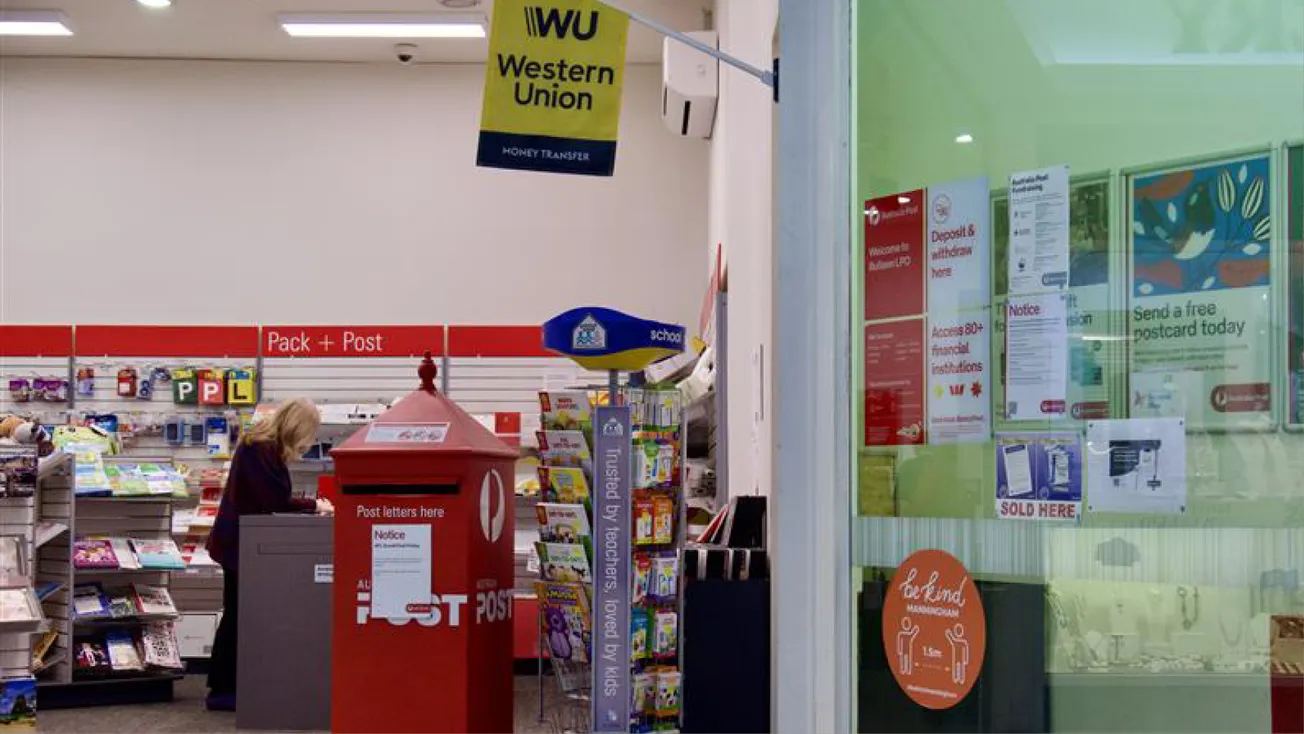Table of Contents
More than 2,000 bank branches and dozens of post offices have shut across Australia in recent years. In Manningham, the loss of local outlets has left elderly residents struggling to adapt.
Early on a weekday morning, Bulleen Plaza’s Australia Post branch is bustling. Volunteers assist older residents with mobility issues, guiding them to the counters, while others rush in and out with parcels and bills.
John, a 58-year-old local, has just finished paying his bills. “I come here every month,” he says. He relies solely on this post office for financial transactions. “Plus, I don’t trust online banking because of scams.”
He remembers when the same shopping centre had four bank branches thirty years ago. “Now, they’re all gone.” John wonders if profitability drives the closures, though official statements cite declining customer visits. For residents like him, the post office has effectively become their bank.
Impact on Older Residents
Just under three kilometres away, the Macedon Square post office in Templestowe Lower abruptly closed in January — a simple notice taped to the door was the only warning.
For residents who still drive, travelling a few extra kilometres to Bulleen Plaza or Doncaster may not seem too difficult. But for those who no longer drive or have mobility limitations, it means relying on family, friends, public transport, or taxis.
Among them is Rosemary, 90, who stopped driving for safety reason.
“I would go to the post office almost every week,” she says. She used to buy stamps, post letters and gifts, and pay bills locally — simple routines that have now become complicated.
“I’m very lucky that I can still get on a bus,” she adds. “But I don’t know what’s happening to other people who are more frail or disabled.”
According to Manningham City Council, 28.5 per cent of the local population is aged 60 or older, making the withdrawal of local services particularly hard-felt.
Calls for Action
Many in Rosemary’s friendship group live alone and relied on nearby post offices for everyday needs. “We started a petition — hundreds signed it,” she says. The group’s president, Helen Jurcevic, has rallied around 180 residents to contact local councillors and politicians.
Local representatives have raised the issue in Parliament, calling on the federal government and Australia Post to provide alternative services. So far, no concrete solutions have emerged.
Senate inquiries and regulatory reviews have long highlighted the importance of maintaining face-to-face financial services, especially in suburban and regional communities.
Across Victoria, post office reductions mirror a national pattern. Australia Post’s 2023 Annual Report shows that over-the-counter transactions have dropped by around 25 per cent over five years. The company attributes the trend to declining customer visits, overlapping networks, the exit of licensed operators, and expiring leases.
Beyond the Statistics: Community Voices
Some residents, however, question the official explanations. Yang, a Bulleen local, says she regularly sees queues at the counter. While anecdotal, it suggests that usage data may not fully reflect community demand.
Since 2023, closures in North Melbourne, Box Hill, and Mitcham have sparked petitions and protests. Most recently, the long-running post office on Springvale Road closed on 18 July — the first time in more than 160 years that Springvale has been without one.
These closures are more than an inconvenience; they symbolise a deeper shift in how essential services are delivered. Chris Grice, Chief Executive of National Seniors Australia, warns that “when a post office and local bank shut down, it can spell the beginning of decline for a community.”
Faced with shrinking services, communities and small businesses are scrambling for stopgap solutions. The Productivity Commission has since proposed that the government fund Australia Post’s community service obligations, to help ease financial strain on the network.
Searching for Alternatives
On Thompson Road in Bulleen, Shane Johnson Pharmacy operates as a Licensed Australia Post Outlet (LPO). Though not a full-service post office — it cannot process passport applications or other complex transactions — it remains an invaluable community hub, offering essential postal and banking services such as parcel collection, bill payments, and passbook access. Staff note that many elderly customers continue to rely on this “window service” for their day-to-day needs.
For Rosemary and others in her group, even this smaller outlet would be welcome. “We don’t expect a big post office again — at least put a small agency in the newsagent or the dry cleaners,” she says.
Internationally, some regions — such as China — have introduced home pickup services for parcels and letters, reducing the need for residents to travel. While such a model may not translate directly to Victoria, it points to how postal networks could better adapt to the realities of an ageing population.







